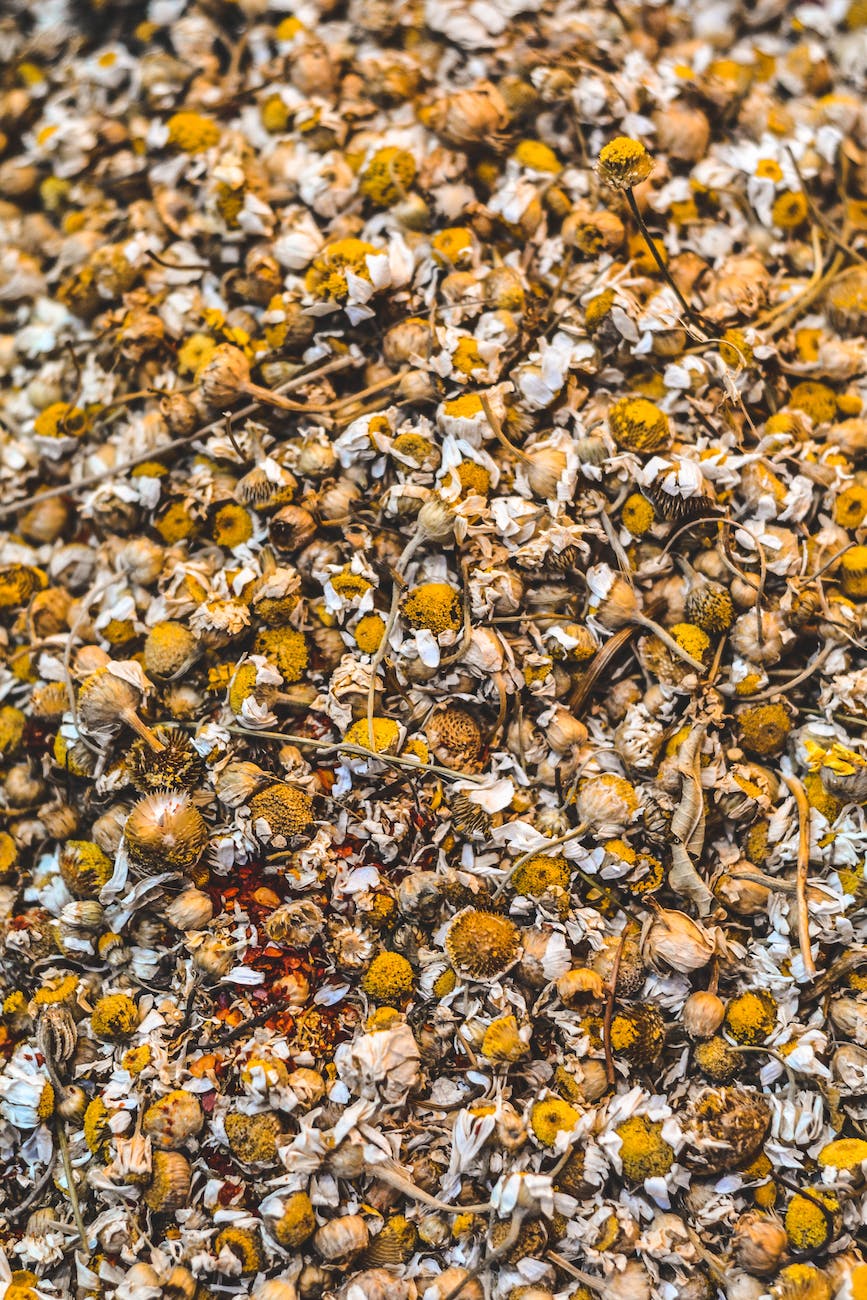
Introduction:
In the realm of tranquil sleep, the combination of lemon verbena and linden blossom stands as a beacon of serenity. These delightful herbs possess calming properties that promote relaxation, alleviate stress, and prepare the mind and body for a restful night’s sleep. In this blog post, we invite you to embrace the night as we explore five exquisite herbal tea blends that showcase the harmonious blend of lemon verbena and linden blossom. By incorporating these soothing botanicals into your bedtime routine, you can create a sanctuary of tranquility that lulls you into a state of deep and rejuvenating slumber. So, let us embark on this journey of embracing the night and discover the secrets of lemon verbena and linden blossom for tranquil sleep. 🌿😴
Ingredients:
- 🍋 Lemon Verbena: Lemon verbena, scientifically known as Aloysia citrodora, is a citrus-scented herb prized for its refreshing aroma and calming properties. It has been used for centuries to promote relaxation, reduce anxiety, and support a restful sleep. Lemon verbena contains compounds that help soothe the nervous system and uplift the spirits, creating an ideal environment for peaceful slumber.
- 🌸 Linden Blossom: Linden blossom, also known as Tilia, is a delicate and fragrant flower cherished for its tranquilizing effects. It is revered for its ability to reduce stress, induce relaxation, and promote a sense of well-being. Linden blossom contains flavonoids that interact with receptors in the brain, helping to calm the mind and prepare the body for a peaceful sleep.
Now, let’s delve into the details and discover five enchanting lemon verbena and linden blossom herbal tea blends that will guide you towards tranquil sleep and embrace the beauty of the night.
Blend 1: Lemon Verbena-Linden Blossom Twilight Serenade
Experience a twilight serenade with the enchanting blend of lemon verbena and linden blossom. Steep 1 teaspoon of dried lemon verbena leaves and 1 teaspoon of dried linden blossom in a cup of hot water for 5 to 7 minutes. Strain the infusion and savor its delicate and soothing flavors. Sip this serene elixir as the evening turns into twilight, allowing the harmonious blend of lemon verbena and linden blossom to serenade your senses and gently guide you towards a tranquil sleep. 🌅🌿
Blend 2: Serene Slumber Elixir
Create a serene slumber elixir by blending lemon verbena and linden blossom with other calming herbs. In a mixing bowl, combine 1 tablespoon of dried lemon verbena leaves, 1 tablespoon of dried linden blossom, 1 tablespoon of chamomile flowers, and 1 teaspoon of lavender buds. Mix well and store the blend in an airtight container. To prepare the tea, steep 1 to 2 teaspoons of the blend in a cup of hot water for 10 to 15 minutes. Strain and savor this aromatic elixir before bedtime, allowing the restorative powers of lemon verbena and linden blossom to envelop you in tranquility and prepare you for a night of rejuvenating sleep. ☕😴
Blend 3: Lemon Verbena-Linden Blossom Moonlit Infusion
Indulge in a moonlit infusion of lemon verbena and linden blossom for a truly serene sleep experience. In a mixing bowl, combine 1 tablespoon of dried lemon verbena leaves, 1 tablespoon of dried linden blossom, 1 tablespoon of lemon balm leaves, and 1 teaspoon of rose petals. Mix well and store the blend in a sealed container. Before bed, steep 1 to 2 teaspoons of the blend in a cup of hot water for 10 minutes. Strain and drink this enchanting infusion while embracing the tranquility of the moonlit night, allowing the lemon verbena and linden blossom to transport you to a realm of serene slumber. 🌙🍃
Blend 4: Lemon Verbena-Linden Blossom Bedtime Soother
Soothe your senses with a bedtime soother infused with the calming essence of lemon verbena and linden blossom. In a small saucepan, heat 1 cup of water and 1 cup of milk (dairy or plant-based) until warm (but not boiling). Add 1 teaspoon of dried lemon verbena leaves and 1 teaspoon of dried linden blossom to the mixture. Let it simmer for 10 minutes. Strain and sweeten with honey or a natural sweetener if desired. Sip on this comforting elixir as you wind down in the evening, feeling the gentle embrace of lemon verbena and linden blossom preparing you for a deep and restful slumber. 🥛😴
Blend 5: Lemon Verbena-Linden Blossom Nighttime Ritual Bath
Immerse yourself in a luxurious nighttime ritual bath infused with the serenity of lemon verbena and linden blossom. Fill your bathtub with warm water and add 1 cup of dried lemon verbena leaves and 1 cup of dried linden blossom. Allow the herbs to steep in the water for 15 to 20 minutes. As you soak in the fragrant bath, close your eyes, breathe deeply, and let the calming aroma envelop you. Feel the stress and tension melt away as the lemon verbena and linden blossom work their magic, creating a serene and peaceful atmosphere that prepares you for a blissful night’s sleep. 🛀💤
Conclusion:
In our journey of embracing the night, we have uncovered the secrets of lemon verbena and linden blossom—two remarkable herbs that offer tranquility and serenity. Through the art of herbal tea blending, we can harness the soothing power of these botanical treasures and create a sanctuary of tranquility that fosters a deep and rejuvenating slumber. Whether you choose to sip on a twilight serenade blend, indulge in a serene slumber elixir, experience a moonlit infusion, enjoy a bedtime soother, or luxuriate in a nighttime ritual bath, the harmonious combination of lemon verbena and linden blossom will guide you towards tranquil sleep and awaken you refreshed and renewed. Embrace these enchanting herbal tea blends, surrender to their soothing embrace, and allow the night to envelop you in its serene beauty. Sweet dreams! 🌿💤












